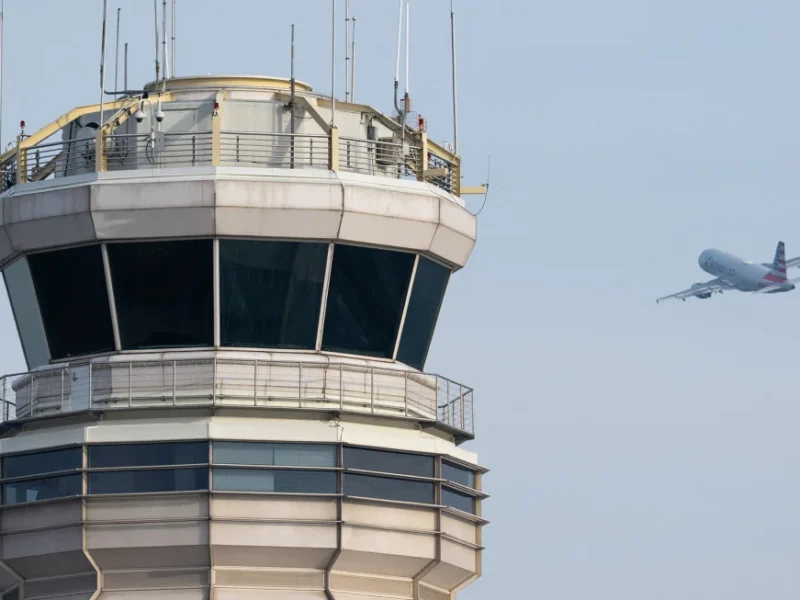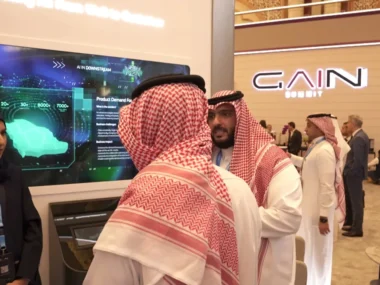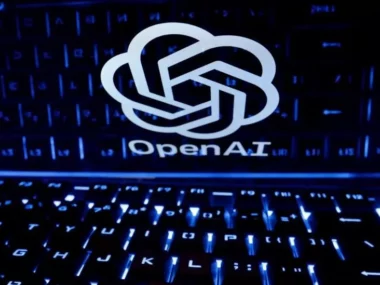Following hours of routine operations, an air traffic controller receives a radio call from a small aircraft expressing uncertainty regarding the status of its landing gear indicators. To address the concern, the controller coordinates a low fly-by near the tower for visual inspection, confirming that the landing gear appears to be down. Despite the reassurance, the controller initiates precautionary measures by alerting the airport fire trucks and guides the aircraft for a safe landing. Such scenarios are commonplace in air traffic control, where safety standards are paramount, yet unforeseen events occur.
This stands in stark contrast to the futuristic notion of AI “pilots” managing autonomous aircraft, along with an autonomous air traffic control system akin to internet routers effortlessly handling data packets. As an aerospace engineer leading a National Academies study mandated by Congress on air traffic controller staffing, it’s clear that while technology continues to advance, automating certain aspects of air traffic control, it’s limited to predetermined functions and cannot adapt to unforeseen circumstances. As demonstrated in the scenario above, human involvement is likely to remain indispensable in air traffic control for the foreseeable future.
What are the duties of air traffic controllers?
The core guidance provided by the Federal Aviation Administration regarding the role of air traffic controllers emphasizes the prevention of aircraft collisions as the primary objective of the air traffic control system. Additionally, controllers are tasked with ensuring a safe, organized, and efficient flow of air traffic, along with providing assistance to pilots in navigating hazardous terrain and adverse weather conditions whenever possible.
Air traffic controllers perform a range of tasks. Tower controllers oversee local operations, granting clearance for aircraft to take off and land while maintaining safe spacing between them. They also handle ground control responsibilities, directing aircraft movements on the taxiways and communicating important flight information and safety advisories to pilots before departure. Tower controllers primarily rely on visual observation from the control tower and radio communication with pilots, supported by some electronic displays. At larger airports staffed by FAA controllers, surface surveillance displays provide additional information about aircraft and ground vehicles on the airfield.
Conversely, approach and en route controllers work in dimly lit, quiet rooms, monitoring large displays that depict aircraft positions within airspace boundaries and along established routes. They communicate with pilots via radio and manage air traffic flying between and above airports, typically at higher speeds and altitudes.
The 21 en route control centers across the United States oversee traffic in airspace between airports, handling aircraft traveling at higher speeds and altitudes.
Controllers at approach control facilities guide departing aircraft from local control after takeoff into en route airspace and assist arriving aircraft transitioning from en route airspace to the landing approach, eventually handing them off to tower controllers for landing.
Each controller oversees all traffic within their designated sector, which can vary in size depending on the air traffic volume and complexity of operations. Sectors may range from a few cubic miles, focused on sequencing aircraft for landing at busy airports, to expansive en route sectors spanning over 30,000 cubic miles (125,045 cubic km) during periods of reduced air traffic. During peak periods or high workload situations, additional controllers may be assigned to assist, or sectors may be divided to be managed by multiple controller teams.
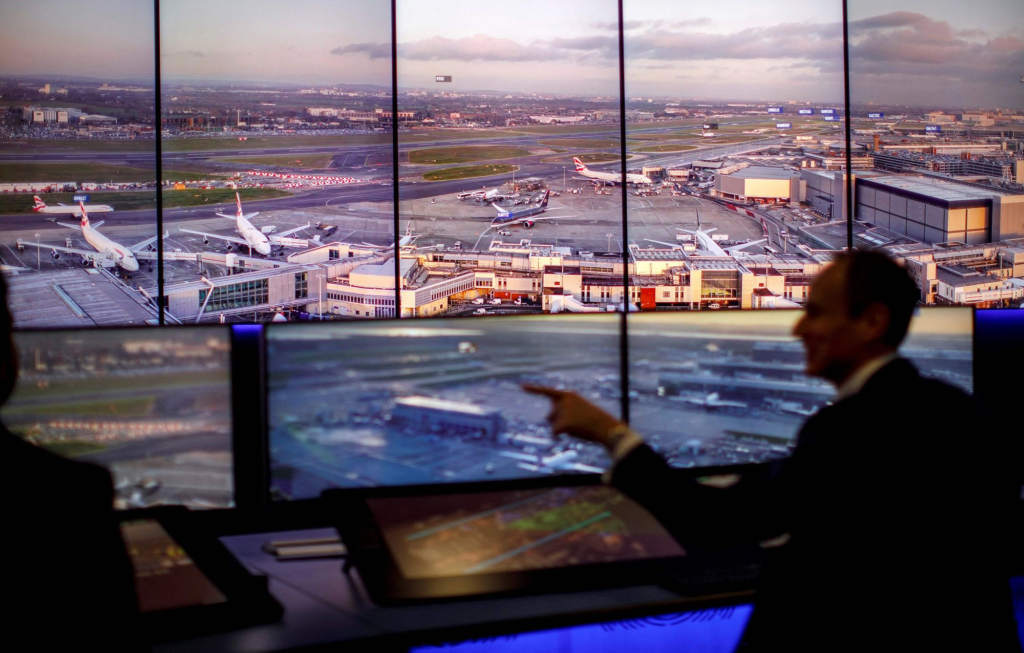
Engineers specializing in air traffic control systems are engaged in their duties at London Heathrow Airport.
Ways in which technology can provide assistance.
Air traffic controllers face significant stress and are susceptible to fatigue and information overload. Heightened public concern regarding an increasing number of near-misses has brought attention to aging technology and staffing deficiencies, resulting in mandatory overtime for controllers. Adopting new technologies offers potential solutions to these challenges.
The air traffic control system is undergoing modernization through various technological advancements. Initiatives like the FAA’s NextGen air transportation system aim to furnish controllers with enhanced and more precise information.
Initially limited to radar tracking, controllers’ displays now integrate comprehensive data on each flight, including radar inputs, automatic position reports from aircraft via automatic dependent surveillance-broadcast, weather updates, flight plans, and flight histories, courtesy of the en route automation modernization system.
These systems aid controllers in identifying potential conflicts between aircraft, as well as instances of aircraft being too close to terrain or structures, and offer recommendations for optimizing aircraft sequencing to ensure smooth traffic flows. During testimony to the U.S. Senate on November 9, 2023, FAA Chief Operating Officer Timothy Arel highlighted ongoing efforts to develop and enhance various air traffic control systems aimed at improving airport safety.
Furthermore, researchers are exploring the application of machine learning to analyze and forecast elements of air traffic and air traffic control, encompassing aspects such as air traffic flow between cities and the behavior of air traffic controllers.
The introduction of technology has the potential to add complexity to situations.
New technology can also bring significant changes to air traffic control, particularly with the emergence of novel aircraft types. Presently, regulations generally confine unmanned aircraft operations to altitudes below 400 feet (122 meters) above ground level and away from airport zones. These unmanned aerial vehicles, or drones, serve various purposes including emergency response, journalism, surveying, delivery services, and recreational use.
However, certain emerging unmanned aircraft companies are proposing operations within controlled airspace. Some intend for their aircraft to follow established flight paths and communicate with air traffic controllers using voice radio, as exemplified by Reliable Robotics and Xwing, both working on automating the Cessna Caravan, a small cargo airplane.
Meanwhile, other companies are exploring innovative business models like advanced air mobility, which involves small, highly automated electric aircraft such as electric air taxis. These ventures would necessitate distinct routes and procedures for managing air traffic.
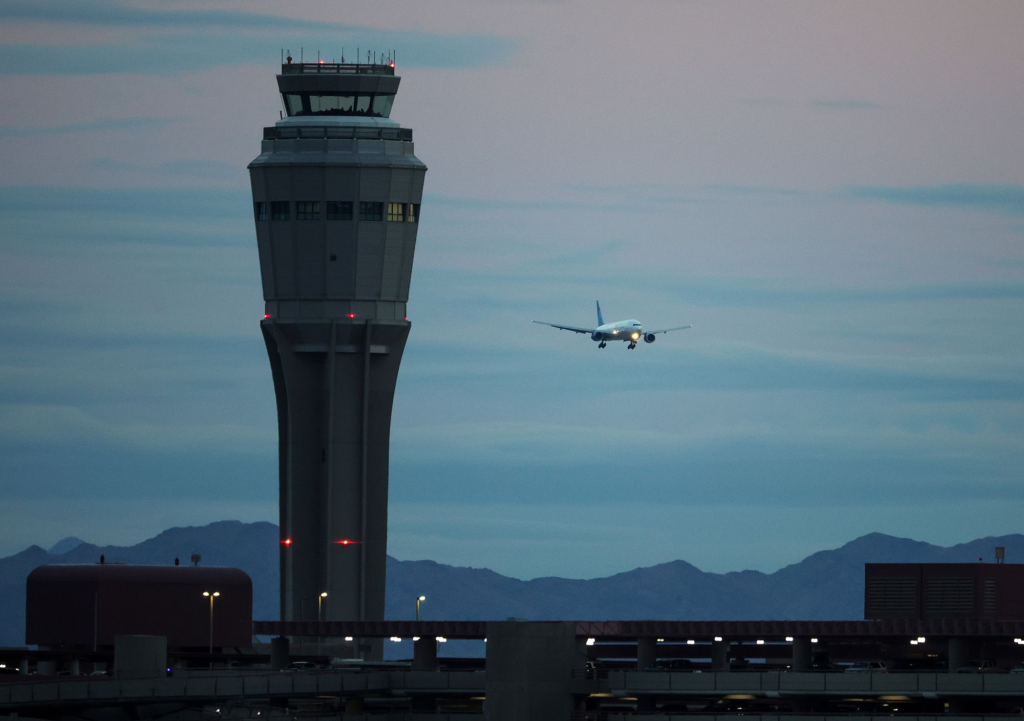
A United Airlines aircraft transporting the Kansas City Chiefs arrives at Harry Reid International Airport in Las Vegas on February 4, 2024, in preparation for Super Bowl LVIII scheduled for February 11.
Anticipate unforeseen events.
An air traffic controller’s daily routine can be disrupted by various circumstances, such as an aircraft requiring special handling due to emergencies or the prioritization of medical flights or VIP aircraft like Air Force One. Controllers are entrusted with the responsibility and flexibility to adapt their management of airspace accordingly.
The demands placed on frontline air traffic control are not well-suited to the capabilities of AI. The aviation community expects air traffic control to maintain its status as one of the safest and most technologically advanced systems. It achieves this through adherence to established procedures, a task that AI can handle, as well as through the ability to adapt and exercise sound judgment when faced with unexpected situations or the implementation of new procedures – an area where AI currently falls short.
In fact, it is during challenging conditions, such as when controllers must navigate aircraft experiencing severe issues, manage airport crises, or respond to widespread airspace closures due to security concerns or infrastructure problems, that the critical role of controllers in ensuring safety becomes most apparent.
Moreover, controllers do not physically pilot the aircraft; rather, they communicate and collaborate with others to guide the aircraft safely. Therefore, their role is fundamentally that of a team player, another aspect where AI currently lacks proficiency.
As an engineer and researcher, I am particularly intrigued by the potential for AI to analyze extensive data records from past air traffic operations to optimize flight routes for efficiency. However, as a pilot, I value the reassurance of hearing a controller’s composed voice on the radio, ready to assist me in quickly and safely resolving any issues I may encounter during flight.
Amy Pritchett is a professor of aerospace engineering at Penn State University. She receives funding from the National Science Foundation through the Center for Advanced Aerial Mobility and Sensors (CAAMS), focusing on in-flight autonomy capable of addressing faults and failures in onboard systems. Additionally, she is concluding a project sponsored by NASA that examines human-autonomy collaboration in advanced aerial mobility.

